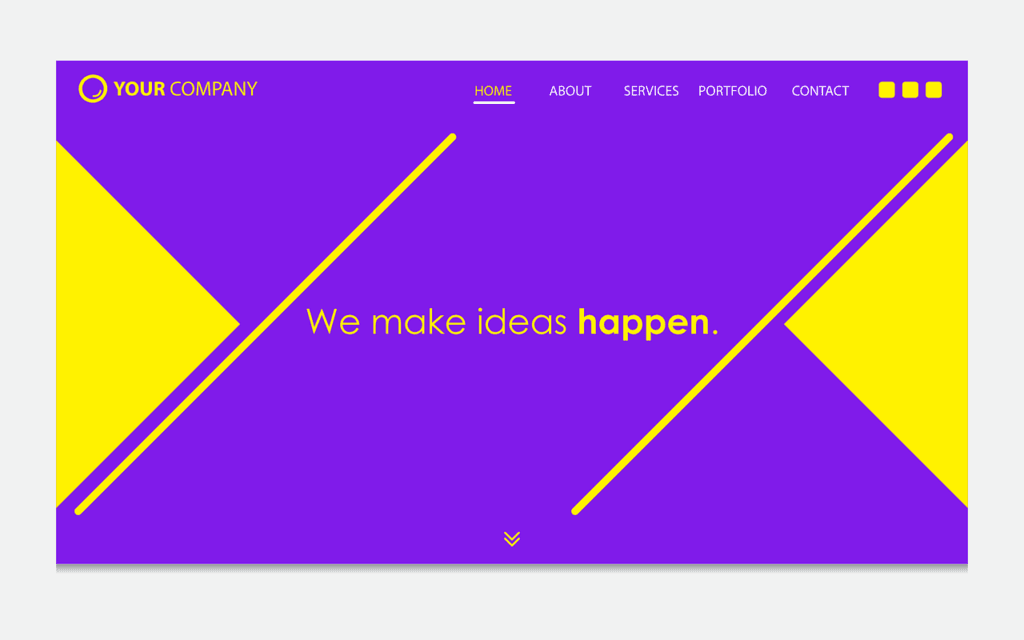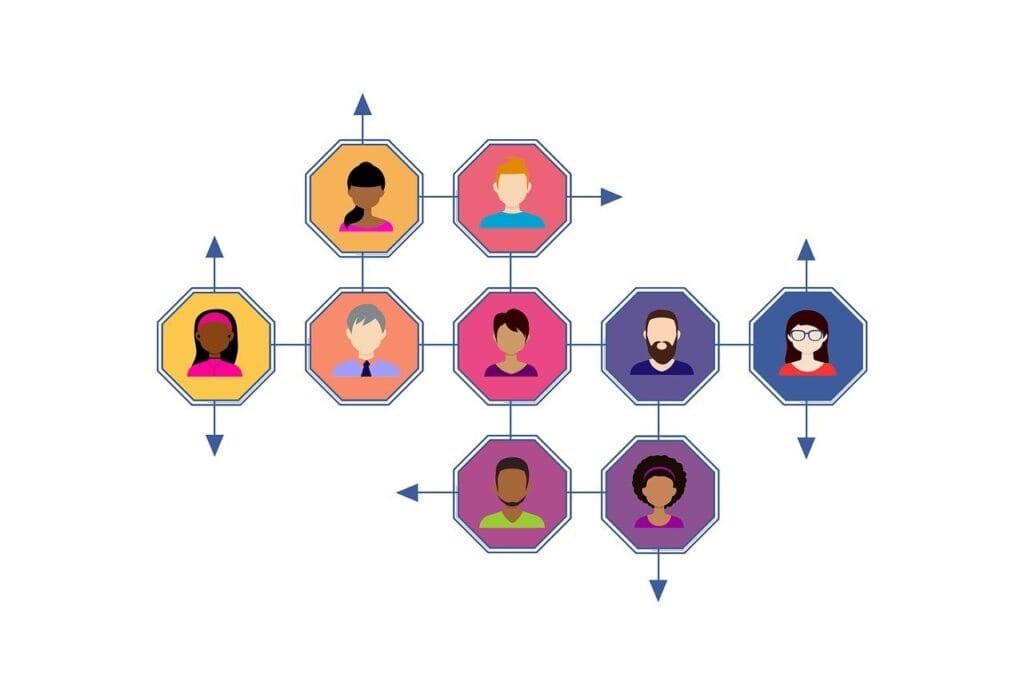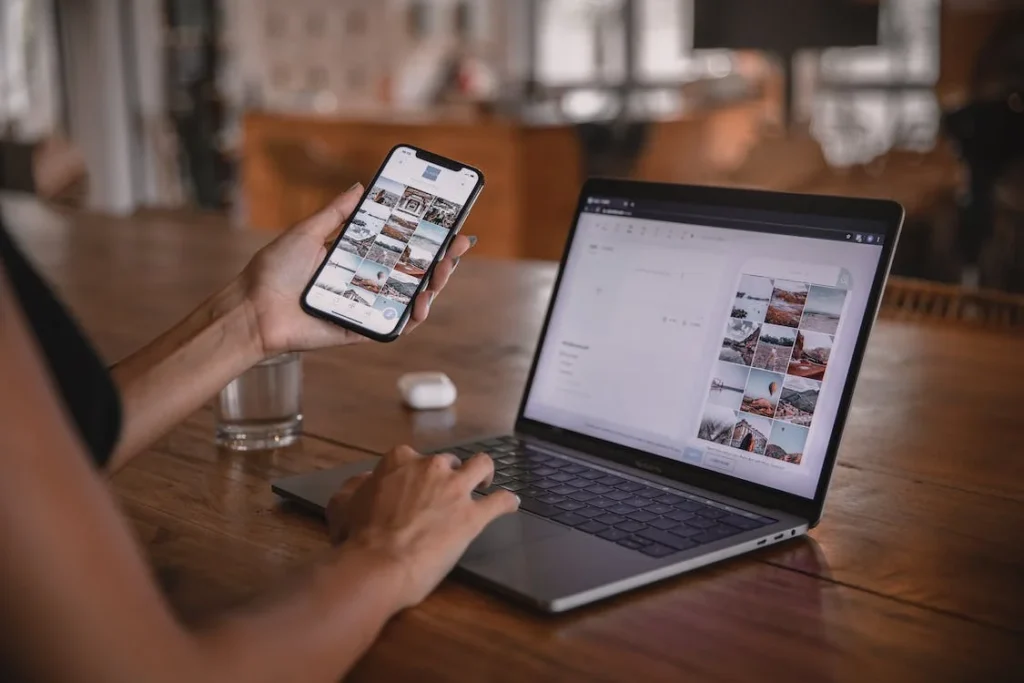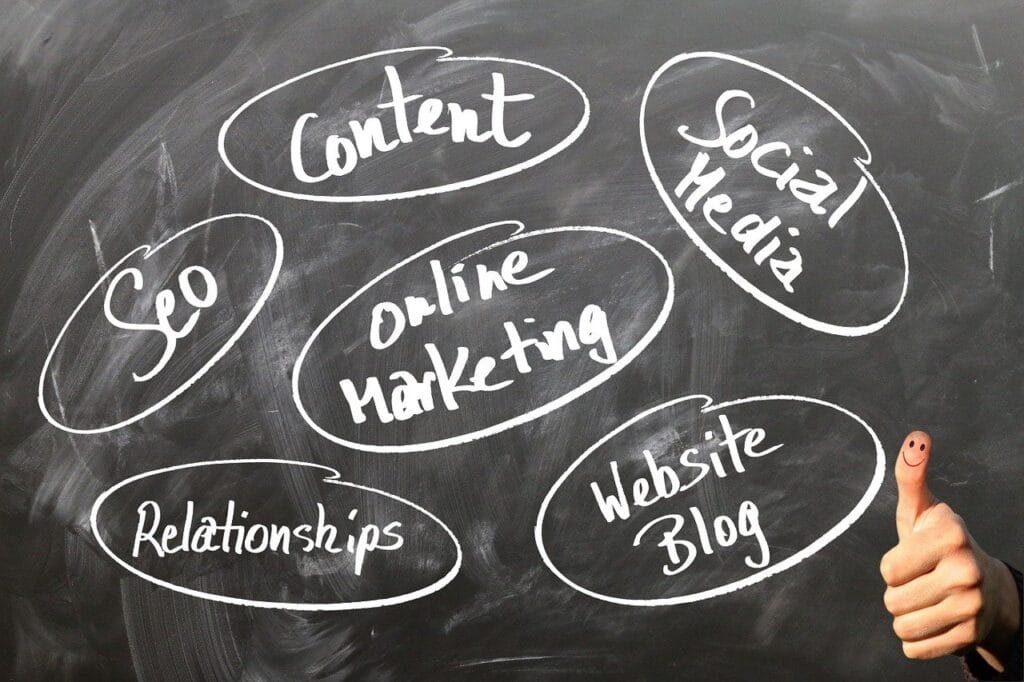This Article has been revised, edited and added to, by Poulomi Chakraborty.
- The Overlapping Realms of Accessibility and SEO
- The Confluence of Accessibility and On-Page SEO
- Importance of Page Structure
- The Role of Alt Text
- Meaningful Content is King
- The Link Between Links
- Form and Function
- Mobile Optimization
- Integrating User Experience (UX) Design with SEO and Accessibility
- Advanced Structured Data and Schema Markup
- Social Media Integration and Accessibility
- Emphasizing Mobile Accessibility in SEO Strategies
- Practical Steps to Merge Accessibility and On-Page SEO
- Implementing Semantic Markup
- Ensure Keyboard Navigation
- Utilize Readable Fonts and Sizing
- Implement Voice Search Optimization
- Continuous Feedback and Iteration
- Building a Foundation with Inclusive Design and Content Strategy
- Leveraging Technology for Accessibility and SEO Gains
- Continuous Improvement through Feedback and Analytics
- Achieving Harmony Between Accessibility and On-Page SEO
- The Ethical Importance of Accessibility
- In Conclusion
In the vast realm of digital marketing and web development, the synergy between accessibility and on-page SEO is often overlooked. While they might seem like disparate disciplines at first glance, they’re closely interwoven in creating a holistic online experience. Let’s unravel the guiding principles that bind these two areas, ensuring your website is both user-friendly and search engine optimized.
The Overlapping Realms of Accessibility and SEO

The digital landscape presents a unique opportunity for startups to forge a path that not only ranks well on search engines but also embodies the ethos of inclusivity and accessibility. In expanding on the intertwining realms of accessibility and on-page SEO, it’s pivotal to delve deeper into strategies that harmonize these components, fostering an environment where website design and optimization serve as pillars for a broader, more engaging user experience.
What is Accessibility?
In web design and development, accessibility implies creating websites usable by everyone, irrespective of any disabilities they might have. For example, a visually impaired user should be able to navigate a website using a screen reader just as efficiently as someone without visual impairments. The overarching goal is to ensure that all users have equal access to information and functionality.
On-Page SEO Explained
On-page SEO refers to the practices and techniques used to optimize individual web pages for search engines. This ensures higher rankings and more relevant traffic in search engines. On-page SEO includes optimizing content, meta tags, URLs, internal links, and more.
Their Overlapping Concerns
While accessibility focuses on user experience and SEO emphasizes visibility in search engines, their strategies often align. Both require a clear website structure, meaningful content, and optimized images, among other things.
Strategic Integration of Accessibility in SEO
Accessibility should not be viewed as an add-on or afterthought in the SEO process. Instead, it is a fundamental aspect that can significantly boost a website’s visibility and user engagement. A strategic approach involves embedding accessibility considerations into the very fabric of on-page SEO tactics.
This means going beyond the basic requirements of alt texts and semantic markup, to a comprehensive integration where every on-page element is designed with both search engines and users with disabilities in mind.
For startup founders, this approach requires a mindset shift. Viewing accessibility as a cornerstone of your SEO strategy means prioritizing it in every aspect of your web development and content creation processes.
It involves adopting a proactive stance towards creating content that is inherently accessible and SEO-friendly, thus ensuring that your digital presence is both inclusive and optimized for search engine visibility.
Leveraging Advanced Technologies for Improved Accessibility
Advancements in technology offer new avenues to enhance website accessibility, which, in turn, can amplify your SEO efforts. Incorporating machine learning and AI to automate and refine the accessibility of your website content not only streamlines the process but also ensures a level of precision and adaptability that manual adjustments might miss.
For instance, AI-driven tools can analyze and suggest optimizations for complex website elements, such as dynamic content and multimedia, ensuring they are accessible to all users, including those using screen readers or other assistive technologies.
Furthermore, leveraging these technologies to analyze user behavior and preferences can lead to more nuanced insights. This data-driven approach enables startups to tailor their content and design to meet the diverse needs of their audience, enhancing both user experience and SEO performance.
Crafting Content with Dual Purpose
In the realm of digital marketing, content reigns supreme. However, the challenge for startups is to craft content that is not only engaging and informative but also accessible to a broad audience, including individuals with disabilities.
This entails writing content that is easy to read and understand, using clear and simple language, and structuring information in a way that is easily navigable. Moreover, it involves considering the nuances of how different content formats, such as videos and podcasts, are accessed by people with various disabilities.
A strategic approach to content creation is to design with diversity in mind. This means anticipating the needs of your audience and ensuring that your content is versatile enough to cater to those needs.
For example, providing transcripts for audio and video content not only makes your website more accessible but also enhances your content’s reach and engagement, as it becomes consumable in multiple formats.
Interactive Elements and User Engagement
Engaging users is at the heart of both SEO and accessibility. Interactive elements, such as quizzes, polls, and interactive infographics, can significantly boost user engagement and time spent on the site.
However, it’s crucial to ensure that these elements are accessible to all users, including those navigating with keyboard-only input or through assistive technologies. Implementing ARIA (Accessible Rich Internet Applications) roles and properties can make dynamic content more accessible, while also providing search engines with valuable context about the interactive elements on your pages.
Continuous Learning and Adaptation
The digital world is ever-evolving, and staying ahead requires a commitment to continuous learning and adaptation. For startups, this means regularly revisiting and refining your accessibility and SEO strategies to align with the latest best practices and technological advancements.
Engaging with communities of users with disabilities can provide invaluable insights into how to improve your website’s accessibility and usability. Additionally, staying informed about the latest SEO trends and algorithms can help you adjust your strategies to maintain high visibility in search engine results.
The synergy between accessibility and on-page SEO is a dynamic and integral aspect of building a successful digital presence. By embracing accessibility as a core component of your SEO strategy, leveraging advanced technologies, crafting dual-purpose content, and committing to continuous learning and adaptation, startup founders can ensure their websites are not only visible to search engines but also accessible and engaging to a wide and diverse audience.
This holistic approach not only drives traffic and engagement but also aligns with the broader goals of inclusivity and digital equality, setting a foundation for sustainable growth and impact in the digital ecosystem.
The Confluence of Accessibility and On-Page SEO
In the evolving digital landscape, the confluence of accessibility and on-page SEO represents a fertile ground for innovation and optimization. Startups, with their agility and fresh perspectives, are uniquely positioned to pioneer practices that not only boost their search engine rankings but also champion inclusivity.
Expanding upon the foundational principles of accessibility and on-page SEO, there are strategic avenues through which startups can further integrate these disciplines, creating a more robust and user-centric web presence.
Importance of Page Structure
A logically structured webpage is essential for both users and search engines. Properly utilizing header tags, maintaining a hierarchy, and ensuring a logical flow helps screen readers interpret and vocalize content. Simultaneously, search engines use these structures to determine the content’s importance and relevance to specific queries.
The Role of Alt Text
‘Alt text’ or ‘alternative text’ is a brief description of a picture, which screen readers use to describe images to visually impaired users. From an SEO perspective, alt texts provide search engines context about an image, helping it rank in image searches.
Meaningful Content is King
While high-quality content serves the audience with valuable information, it also positions the site as an authority in search engines. Ensuring that the content is readable and understandable to all, including those with disabilities, boosts engagement, reduces bounce rates, and indirectly influences SEO.
The Link Between Links
Internal linking aids both accessibility and SEO. For users, especially those with screen readers, clear link texts indicate the link’s purpose, ensuring smooth navigation. For search engines, internal links emphasize the importance of pages, helping in better indexing and ranking.
Form and Function
Forms, often used for user registrations, feedback, or e-commerce transactions, need to be accessible. Proper labels, clear error messages, and easy navigation enhance user experience. Optimizing forms also means faster and more accurate crawling by search engines.
Mobile Optimization
As mobile browsing surpasses desktop, responsive design isn’t a luxury—it’s a necessity. A site optimized for mobile ensures that users, regardless of their device, have a seamless experience. Mobile-friendliness is also a ranking factor for search engines.
Integrating User Experience (UX) Design with SEO and Accessibility

The essence of marrying accessibility with on-page SEO lies in the meticulous crafting of user journeys. These journeys should be intuitive and seamless for all users, including those with disabilities. UX design becomes a critical focal point, where the aim is to minimize obstacles and enhance ease of navigation throughout the website.
For startup founders, investing in UX design means engaging in thorough user research to understand the diverse needs of their audience, including users with disabilities. This involves detailed mapping of user personas and scenarios to ensure that the website architecture naturally guides users towards their desired outcomes, whether it’s consuming content, making a purchase, or subscribing to a service.
Enhancing Interaction through Design
The interface and interaction design of your website play pivotal roles in the user experience, significantly affecting both accessibility and SEO. Ensuring that interactive elements like buttons, forms, and navigation menus are designed with accessibility in mind not only aids users with disabilities but also contributes to SEO by improving overall user engagement and reducing bounce rates.
Strategies such as incorporating clear visual cues, ensuring that interactive elements are easily identifiable, and providing alternative navigation paths can enhance usability while simultaneously boosting SEO metrics.
Advanced Structured Data and Schema Markup
Structured data and schema markup present opportunities to deepen the integration of accessibility and SEO. By implementing schema markup, startups can provide search engines with detailed information about the content of their websites, facilitating richer search results and improving content discoverability.
For accessibility, structured data can enhance the clarity and context of content for assistive technologies, offering a more nuanced and informative experience for users with disabilities. Startups should strategically employ schema markup to highlight the most critical and relevant information, such as product features, prices, and reviews, or to detail articles and blog posts, making the content more accessible and search-engine friendly.
Social Media Integration and Accessibility
Social media platforms are increasingly becoming a critical part of the SEO ecosystem, driving traffic and engagement back to the website. Ensuring that your social media content is accessible extends the reach of your content to a wider audience, including those with disabilities, thereby amplifying your brand’s message and boosting website traffic.
Strategies such as adding descriptive captions to images, using accessible hashtags, and providing transcripts for video content can enhance accessibility. For startups, this means developing a cohesive social media strategy that aligns with both SEO goals and accessibility standards, leveraging the vast audience on social media platforms to drive engagement and improve search engine visibility.
Emphasizing Mobile Accessibility in SEO Strategies
With the mobile-first indexing approach of search engines, the mobile experience of a website has become a critical factor in SEO rankings. For startups, this emphasizes the need to ensure that mobile versions of their websites are not only responsive but also accessible. This involves designing touch-friendly interfaces, ensuring that content is easily navigable with assistive technologies on mobile devices, and optimizing page speeds to reduce load times.
Prioritizing mobile accessibility enhances the user experience for a significant portion of the audience, including those with disabilities, thus supporting SEO efforts by improving engagement metrics and reducing bounce rates.
The intersection of accessibility and on-page SEO is a dynamic space where startups can innovate and differentiate themselves. By focusing on crafting intuitive user journeys, enhancing interaction through design, leveraging advanced structured data, integrating social media with accessibility in mind, and prioritizing mobile accessibility, startups can build a web presence that is not only optimized for search engines but also universally accessible.
This holistic approach not only drives traffic and engagement but also positions the startup as an inclusive brand committed to providing a seamless and engaging user experience for all.

Related: Check out our free SEO suite

Practical Steps to Merge Accessibility and On-Page SEO
For startups poised to make an impact, the fusion of accessibility and on-page SEO is not just about following guidelines; it’s about crafting an online presence that speaks to every user and search engine alike. This section delves into practical, yet strategic steps startups can take to intertwine these crucial aspects, ensuring a digital footprint that is both inclusive and visible.
Implementing Semantic Markup
Semantic markup refers to HTML tags that communicate the meaning and structure of web content.
Advantages for Accessibility:
- Allows screen readers to understand and narrate the structure and content, offering a coherent reading experience to users with visual impairments.
- Assistive technologies can use semantic elements to enable keyboard shortcuts or specialized navigation.
Advantages for SEO:
- Search engines use semantic elements to better understand and index web content, leading to improved rankings.
- Allows for rich results or enhanced listings in search results (like featured snippets).
Ensure Keyboard Navigation
Every function of a website should be accessible using only a keyboard. This helps those who cannot use a mouse due to physical or visual impairments.
Advantages for Accessibility:
- Provides ease of navigation for users reliant on keyboard-only navigation.
- Ensures that all interactive elements like forms, buttons, and links can be accessed and activated using keyboard commands.
Advantages for SEO:
- A well-structured site that supports keyboard navigation often has a clean codebase, which search engines prefer.
- Reducing bounce rates as users who prefer or rely on keyboards can navigate easily.
Utilize Readable Fonts and Sizing
While stylish fonts might seem attractive, readability is crucial.
Advantages for Accessibility:
- Ensures that users, including those with mild visual impairments or reading difficulties, can easily process the content.
- Allows users to resize text without loss of content or functionality.
Advantages for SEO:
- Improved user experience can lead to longer site visits and lower bounce rates, which can influence rankings.
- Content is more likely to be shared or linked to when it’s readable, aiding in backlink generation.
Implement Voice Search Optimization

With the rise of voice-activated assistants, voice search optimization is becoming essential.
Advantages for Accessibility:
- Facilitates users with motor disabilities or those who find it easier to use voice commands.
- Makes the site more navigable through voice commands.
Advantages for SEO:
- Improves visibility in voice search results, an increasingly significant portion of online searches.
- Voice search queries are often longer and more conversational, offering opportunities for long-tail keyword optimization.
Continuous Feedback and Iteration
Encourage user feedback specifically about accessibility and usability issues and make a commitment to act on this feedback.
Advantages for Accessibility:
- Direct feedback from users can pinpoint overlooked accessibility barriers.
- Demonstrates a commitment to the user community, encouraging more engagement.
Advantages for SEO:
- Regularly updated sites, especially those that improve user experience based on feedback, are viewed favorably by search engines.
- Encouraging user engagement and interaction can lead to increased site traffic and improved metrics like dwell time.
Building a Foundation with Inclusive Design and Content Strategy
At the heart of an effective strategy is the principle of inclusive design. This approach goes beyond mere compliance, embedding accessibility into the DNA of your website’s design and user experience. Inclusive design considers the full range of human diversity, including but not limited to, disabilities.
For startups, this means adopting a mindset where every design decision—from color contrast to navigation structure—is made with consideration of its impact on all users. In doing so, not only does the website become more accessible, but it also enhances the user experience for everyone, a key factor that search engines like Google increasingly prioritize in their rankings.
Content That Connects and Communicates
Content is the vehicle through which startups communicate their value proposition, engage with their audience, and convey information. Making this content accessible and SEO-friendly is a dual-purpose strategy that amplifies reach and inclusivity. Start by ensuring your content is easy to understand, avoiding jargon and complex language that can alienate users or confuse search engines.
Use headings and subheadings to structure your content logically, making it more digestible for both readers and search algorithms. Including captions and transcripts for multimedia content not only makes your site more accessible but also provides additional text for search engines to index, enhancing your visibility.
Leveraging Technology for Accessibility and SEO Gains
In the fast-paced startup environment, efficiency is key. Leveraging AI and automation can streamline the process of making your website accessible while simultaneously optimizing for SEO. Tools that automatically generate alt text for images, for example, can save time and ensure that visual content is accessible to users with visual impairments and comprehensible to search engines.
Similarly, automated accessibility testing tools can identify and help rectify common accessibility issues, which, when addressed, can improve user engagement and satisfaction—factors that influence SEO rankings.
The Role of Voice Technology in Shaping Future SEO
Voice search is becoming increasingly prevalent, altering the way users interact with online content. Optimizing for voice search requires a focus on natural language processing and understanding the intent behind users’ queries.
For startups, this means creating content that answers questions directly and conversationally, making it accessible to voice search technologies and assistive devices. Incorporating FAQs or a Q&A format into your content strategy can make your site more friendly to both voice search and users seeking accessible information.
Continuous Improvement through Feedback and Analytics
Building an accessible and SEO-optimized website is an ongoing process that benefits greatly from user input. Encourage feedback from your audience, including those with disabilities, to gain insights into how you can improve accessibility and user experience.
Implementing changes based on this feedback not only demonstrates your commitment to inclusivity but can also uncover opportunities to enhance your SEO strategy.
Analytics as a Tool for Inclusive Growth
Data plays a crucial role in refining and validating your strategies. Utilize analytics to monitor how changes in accessibility and SEO impact user behavior and website performance.
Look beyond traditional metrics to include measures of accessibility engagement, such as the use of assistive technologies or the interaction with alternative content forms. Analyzing these trends can provide valuable insights into how to further optimize your site for both accessibility and search engine visibility.
In synthesizing accessibility with on-page SEO, startups can forge a path that leads not only to greater visibility but also to a more inclusive digital world.
By embracing inclusive design, leveraging technology, and committing to continuous improvement, startups can create websites that are not just visible to search engines but accessible and welcoming to everyone, laying the groundwork for sustainable growth and impact.
Achieving Harmony Between Accessibility and On-Page SEO

Achieving harmony between accessibility and on-page SEO transcends mere compliance or optimization. It embodies a strategic confluence that enhances user experience and search engine visibility, forging a pathway for startups to establish a resilient and inclusive online presence. This section offers strategic insights and actionable advice for startup founders aiming to integrate these vital aspects seamlessly.
Embracing Video and Multimedia
With the growing prevalence of multimedia content, ensuring its accessibility is crucial.
Subtitles and Transcripts: Subtitles aren’t just for those with hearing impairments; they increase engagement as viewers can understand content in noisy environments. From an SEO perspective, transcripts can be indexed by search engines, making your video content discoverable.
Video Descriptions: For visually impaired users, descriptions provide context. Additionally, rich video descriptions and meta data help in ranking the multimedia content higher in search engines.
Understanding User Intent
Both accessibility and on-page SEO hinge upon understanding and meeting user needs.
Feedback Mechanisms: Integrating feedback tools lets users highlight accessibility issues, which can be addressed in subsequent updates. Moreover, understanding user queries and feedback can guide content creation, addressing user intent, a vital aspect of SEO.
Adaptive Content: Content that adapts based on user behavior or preferences ensures a tailored user experience. If a user frequently interacts with a specific section, making it easily accessible increases engagement. SEO also benefits as search engines recognize the relevance and usability of such adaptive content.
Color and Design Choices
Color blindness and other vision-related challenges make certain color combinations hard to distinguish.
Contrast Ratios: Ensuring that text and background colors have sufficient contrast makes reading easier for everyone, including people with vision impairments. It also indirectly benefits SEO as it enhances user engagement and reduces bounce rate.
Consistent Design: Consistency in design aids in user navigation and experience. It provides clear pathways for crawlers, enabling efficient content indexing.
Leveraging ARIA Landmarks
Accessible Rich Internet Applications (ARIA) is a set of attributes that make web content and web applications more accessible. Using ARIA landmarks helps in defining areas like main content, navigation, and banners. It’s beneficial for screen readers and, by making content more organized and structured, aids SEO.
Page Speed and Performance
Optimization: A faster-loading page improves user experience, reducing bounce rates. Search engines, recognizing this, often rank faster pages higher.
Image and Media Optimization: Compressing images and multimedia ensures faster load times without compromising quality. Alt text and captions, as previously discussed, enhance both accessibility and SEO.
Inclusive Testing
User Testing: By involving a diverse group of testers, including those with disabilities, you ensure that the website is accessible to a broader audience.
SEO Testing Tools: Tools like Google’s Search Console provide insights into how effectively a site is being indexed and where improvements can be made.
Prioritizing User-Centric Optimization
The core of achieving harmony lies in prioritizing a user-centric approach to website design and content. This means viewing your online presence through the lens of your users, considering both those with disabilities and the wider audience. Start by mapping out user journeys on your website, paying special attention to potential pain points for users with disabilities.
Addressing these issues not only makes your website more accessible but also improves the overall user experience, a critical factor in SEO rankings. For startups, this approach involves continuous user experience (UX) research and testing, incorporating feedback from a diverse user base to inform design and content updates.
Enhancing Accessibility with Progressive Enhancement
Progressive enhancement is a web design strategy that starts with a basic, accessible version of your website, then adds more complex features and designs that do not compromise accessibility. This approach ensures that all users, regardless of their device or ability, can access the core content and functionality of your site.
From an SEO perspective, a website built on the principles of progressive enhancement is more likely to have a solid structure and clean code, which search engines favor. For startups, implementing progressive enhancement means prioritizing content and functionality over aesthetic design, ensuring that your site is accessible and SEO-friendly from the ground up.
Strategic Content and Technical Alignment
Content is the cornerstone of both accessibility and SEO. Creating content that is accessible and resonates with a broad audience requires a deep understanding of your users’ needs and preferences. Use clear, concise language and organize your content logically, employing headings, lists, and other formatting tools to improve readability and scanability.
Including accessible multimedia content, such as videos with captions and descriptive audio, not only makes your site more inclusive but also enriches your content offering, boosting engagement and SEO performance. For startups, this means developing a content strategy that aligns with accessibility guidelines while also targeting relevant keywords and topics to enhance search visibility.
Leveraging Technical SEO for Enhanced Accessibility
Technical SEO encompasses the behind-the-scenes aspects of SEO, such as site architecture, coding standards, and mobile responsiveness, many of which overlap with accessibility principles. For instance, ensuring your website loads quickly and is navigable for users of assistive technologies can significantly improve both its accessibility and its SEO ranking.
Similarly, using semantic HTML5 and ARIA roles can help search engines understand the structure and content of your site, improving indexability and visibility. Startups should conduct regular technical SEO audits, using tools that also evaluate accessibility, to identify and rectify issues that could impact both search rankings and user experience.
Fostering Collaboration and Advocacy
Achieving harmony between accessibility and SEO is not a one-time effort but a continuous journey that requires collaboration across your organization. Foster a culture where inclusivity, user experience, and SEO are seen as interconnected objectives that contribute to the overall success of your startup.
Encourage teams to share insights, challenge assumptions, and experiment with new strategies to enhance both accessibility and SEO. Additionally, advocating for accessibility and SEO within your industry can help raise awareness, drive innovation, and establish your startup as a leader in creating a more inclusive and visible online world.
Harmonizing accessibility and on-page SEO demands a strategic, user-centric approach that integrates technical optimization with a deep commitment to inclusivity. By prioritizing user experience, aligning content and technical practices, and fostering a culture of collaboration and continuous improvement, startups can build websites that are not only accessible to all users but also optimized for search engines, setting the foundation for sustainable growth and a meaningful online presence.
The Ethical Importance of Accessibility

When we discuss website accessibility, it’s easy to be caught up in the practical benefits — better user experience, increased audience reach, and a potential boost in SEO. While these are undeniably significant, it is equally essential to understand the deeper ethical imperative driving the push for a more inclusive internet.
Digital Equality as a Right, Not a Privilege
The internet has emerged as a foundational pillar of modern society. It’s where we learn, communicate, shop, and express ourselves. As such, access to the digital world shouldn’t be a privilege reserved for a few; it should be an equal right for everyone.
People with disabilities face myriad challenges in the physical world, from infrastructural to social barriers. The digital realm has the potential to be a great equalizer, providing opportunities and experiences without the limitations of the physical environment. By ensuring our websites are accessible, we’re taking a stand for digital equality, affirming that every individual, irrespective of their physical or cognitive abilities, deserves equal access to online resources and communities.
Reflecting Societal Diversity
Just as our societies are diverse tapestries of individuals, experiences, and abilities, our digital landscapes should reflect this rich mosaic. A website that caters only to a specific segment of the population inadvertently sends a message: this space isn’t for everyone.
By championing accessibility, we ensure our digital spaces are welcoming, inclusive, and representative of the diverse audience they serve. Such inclusivity not only enriches the online community but also fosters empathy and understanding among its users.
The Responsibility of Creators
Web developers, designers, and content creators hold the keys to the digital world. With this power comes responsibility. Ethical web development means recognizing this responsibility and actively seeking ways to reduce barriers, ensuring every user can engage with content, services, and products.
Accessibility isn’t just about compliance or ticking off a checklist. It’s about understanding the lived experiences of users with disabilities and being genuinely committed to making their online journey as seamless and enriching as that of any other user.
A Broader Perspective on Business Ethics
In the world of business, corporate social responsibility (CSR) is increasingly taking center stage. Companies are being held accountable not just for their profits, but also for their impact on society and the environment. In this broader understanding of business ethics, digital accessibility emerges as a key concern. It represents a company’s commitment to serve and respect all its stakeholders, including customers with disabilities.
In Conclusion
In conclusion, the integration of accessibility and on-page SEO is not merely a technical endeavor but a strategic imperative for startups aiming to thrive in the digital ecosystem. By weaving these principles into the fabric of your digital marketing strategies, startups can unlock a synergy that amplifies online visibility, enhances user experience, and champions inclusivity.
This holistic approach not only positions your brand as an authority in your industry but also as a beacon of innovation and inclusivity. As we navigate the complexities of the digital landscape, the fusion of accessibility and SEO emerges as a powerful strategy to reach a wider audience, build meaningful connections, and drive sustainable growth. Startups that embrace this dual focus will not only excel in search rankings but also in creating an online presence that is accessible, engaging, and universally welcoming, laying the groundwork for a future where digital spaces are inclusive and optimized for all.
Read Next:
- 3Ps in Marketing – The New Marketing Mix
- 25 Ways to Get More Views and Engagement on Your Instagram Reels (Fast!)
- 8 Content Amplification Tips to Maximize Lead Generation
- Lead Generation for B2B – In 12 Steps (Use this Strategy Now!)
- Skyrocket Your Email Outreach ROI! Strategies (+Experiments) By 19 Experts




















